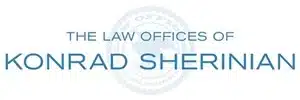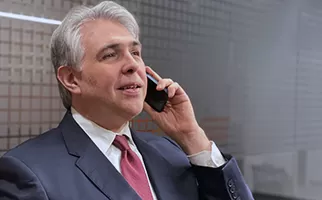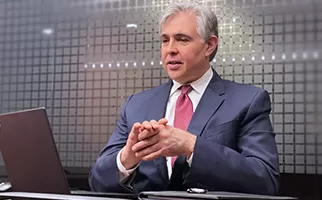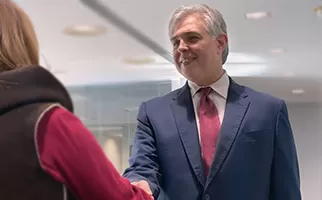A BRIEF HISTORY OF PATENTS
In what may be the first example of a patent law, the Greek City of Sybaris encouraged inventors to register their creations with a grant of monopoly for one year as of approximately 500 BC.
However, the first patent modern patent law with detailed records and history is likely the Venice Patent Act of 1474, which read, in part:
We have among us men of great genius, apt to invent and discover ingenious devices; and in view of the grandeur and virtue of our City, more such men come to us from divers parts. Now if provision were made for the works and devices discovered by such persons, so that others who may see them could not build them and take the inventor’s honor away, more menu would then apply their genius, would discover, and would build devices of great utility and benefit to our Commonwealth.
Therefore:
Be it enacted that, by the authority of this Council, every person who shall build any new and ingenious device in this City, not previously made in this Commonwealth, shall give notice of it to the office of our General Welfare Board when it has been reduced to perfection so that it can be used operated. It being forbidden to every other person in any of our territories and towns to make any further device confirming with and similar to said one, without the consent and license of the author, for the term of ten years. And if anybody builds it in violation hereof, the aforesaid author and inventor shall be entitled to have summoned before any magistrate of this City, by which Magistrate the said infringer shall be constrained to pay him hundred ducats; and the device shall be destroyed at once. It being, however, within the power and discretion of the Government, in its activities, to take and use any such device and instruction, with this condition however that no one but the author shall operate it.
By passing this law, the Venetian Senate hoped to encourage further innovation and investment, as well as attract foreign inventors into Venice. Of special interest, a person did not have to be an “inventor” to benefit from this Act – a technology importer could benefit from this Act as well. Given the communications technology of the time – messengers sent by boat or horse – this served the people of Venice by encouraging opportunistic travelers to bring valuable technology back to Venice.
The Crown of England had long issued “letters patents” to favored persons, or persons who were prepared for them. Letters patents effectively granted a monopoly to the holder to deal in the particular good. However, a series of abuses, where letters patents were issued for such commodities as salt and starch, Parliament passed the Statute of Monopolies in 1624. In particular, the operative language of the Statute of Monopolies read as follows:
Provided also that any Declaration before mentioned shall not extend to any Patents and Grant of Privilege for the term of fourteen years or under, hereafter to be made of the sole working or making of any manner of new Manufactures within this Realm, to the true and first Inventor and Inventors of such Manufactures, which others at the time of making such Patents and Grants shall not use, so as also they be not contrary to the Law nor mischievous to the State, by raising prices of Commodities at home, or hurt of Trade, or generally inconvenient; the said fourteen years to be measured from the date of the first Patent or Grant of such privilege hereafter to be made, but that the same shall be of such force as they should be if this Act had never been made, and of none other.
This statute is probably the first that restricted grants to “inventors,” and is generally considered a major advance not only in patent law, but also in economics, as it marked the transition of England from a feudalistic economy to a capitalistic economy. In fact, parts of the Statute of Monopolies are technically still in force within the United Kingdom, and the Australian Patent Act of 1990, which is in force today, actually references the above language as a test for patentability.
Other countries around the world followed suit. For example, after the French revolution, the French instituted grants of patents to “inventors.” Similarly, several of the colonies that became the United States granted patents to inventors. After the Revolutionary War, patents became enshrined in the U.S. Constitution, where Article I, Section 8, Paragraph 8 reads as follows:
To Promote the progress of Science and useful Arts, by securing for limited times to Authors and Inventors the exclusive Right to their respective Writings and Discoveries;
Shortly after the Constitution was written, the first Patent Act was passed by Congress on April 10, 1790 and was titled “An Act to promote the progress of useful Arts. At that time, at least two of the Secretary of State, the Secretary for the Department of War, and the Attorney General had to agree that an invention was sufficiently useful and important to issue a patent.
U.S. patent laws were revised several times, with modern examination being instituted in 1836. Since the passage of the 1790 Act, more than eight million patents have been issued by the United States, and the overall benefit to the U.S. economy is beyond measure.
The U.S. patent system has continued to evolve, as have patent systems around the world. The most recent update to U.S. law occurred on September 16, 2011, when the American Invents Act became law. One of the key features of this act was to align U.S. patent law with the rest of the world by moving from a first-to-invent system to a first-to-file system. Undoubtedly, the coming century will bring further evolution to U.S. and world patent law, with the result being ever greater contribution to technological development and better, more prosperous lives for people around the world.
If you have a question or issue regarding patents, please feel free to reach out to us via telephone or email. You may also fill out our online inquiry form and we will strive to get back to you within 24 hours.
Patent 101
Watch Our Video
Here’s a short video describing an overview on patents. It covers a lot of the basics, including the three main types of patents:
-
- Utility Patents
- Design Patents
- Plant Patents
Call for a Consultation
(630) 318-2606
Let’s Talk About Your Invention
Phone Consultation
Find it easier to talk rather than write? Have a lot of questions you want to ask? Let's talk over the phone.
Virtual Consultation
Need to share something on screen with us? Like to see who you are working with? Let's get online.
In-Person Consultation
Prefer a face-to-face and a handshake? We have offices in Chicago or Naperville, Illinois.
Whether you are at the initial starting stage, or trying to protect and enforce what you’ve already have, we can help patent and protect your idea or invention. Reach out to us today. We will quickly set up a time to discuss your intellectual property with an experienced patent attorney.
Available 24/7
Patent FAQs
Here’s a list of the most frequently asked questions about patents. Open each to see our pages dedicated to that topic.
How long does it take to get a patent in Chicago?
The timeline varies depending on the type of patent and the USPTO’s backlog. On average, utility patents take 1-3 years, while design patents are typically processed faster.
What is the cost of filing a patent?
Patent costs vary based on complexity. A utility patent can range from $5,000 to $15,000+, including USPTO and attorney fees. Design patents generally cost less.
Can I enforce my patent if someone infringes on it?
Yes, patent owners can legally enforce their rights and may file lawsuits in federal court for injunctions or damages. A patent attorney can help navigate the process.
What is the difference between utility and design patents?
- Utility Patents protect the functionality of an invention (valid for 20 years).
- Design Patents protect the appearance (valid for 15 years).
Do I need a patent attorney to file a patent?
While not required, working with a patent attorney significantly improves your chances of success, ensuring a strong, well-drafted application and USPTO compliance.
How do I check if my invention is already patented?
A patent search helps determine if an idea is novel. You can search the USPTO database, but a comprehensive attorney-conducted search provides the most reliable results.
Experienced Patent Attorneys
The attorneys at the Law Offices of Konrad Sherinian have extensive experience in patent matters. We’ve helped clients obtain numerous patents, including more difficult categories such as software, electronics, and the mechanical arts. We have obtained numerous patents in the United States and throughout the world. In addition, we have litigated patent cases on behalf of both plaintiffs and defendants in District Courts throughout the United States.




